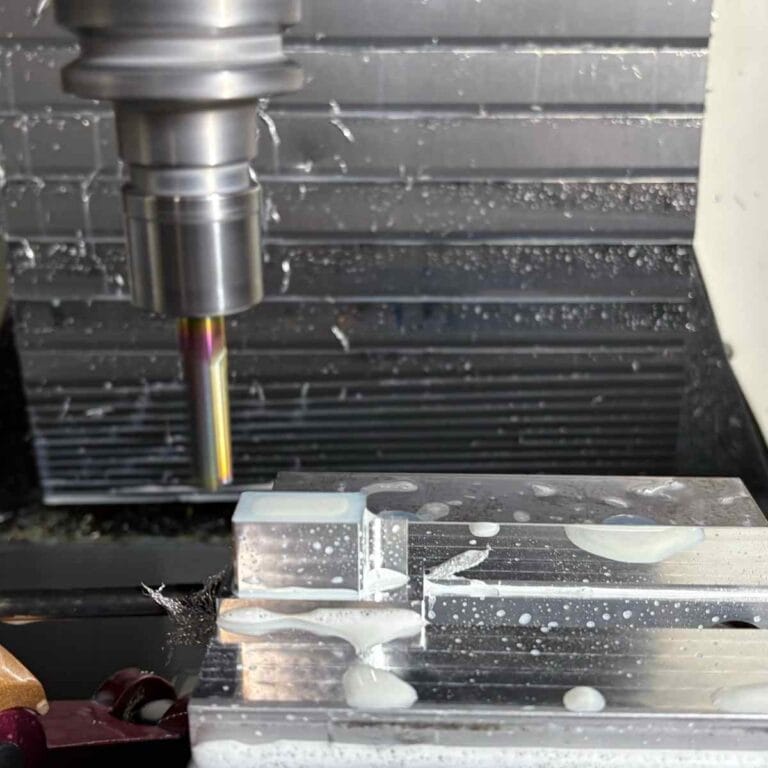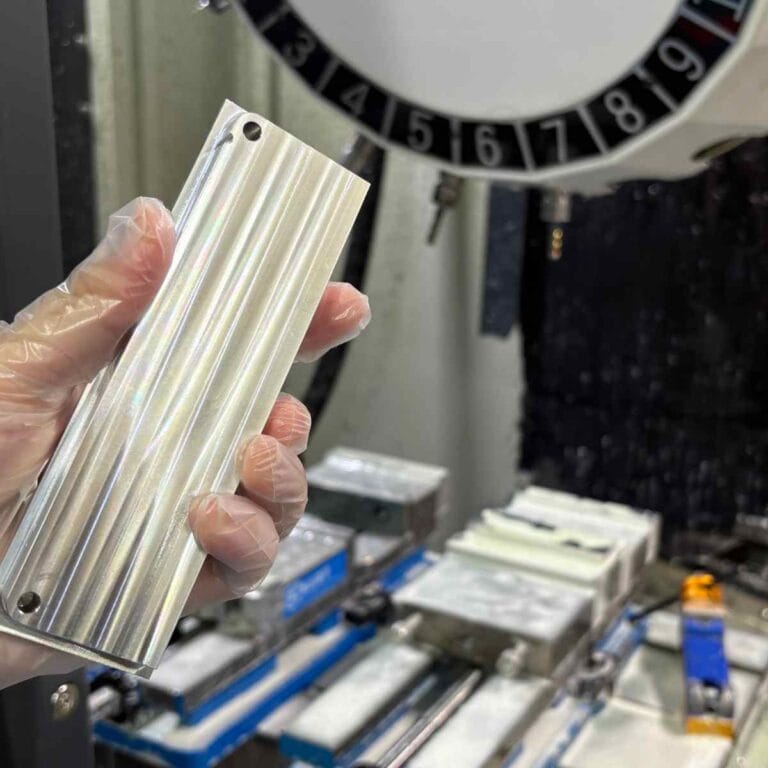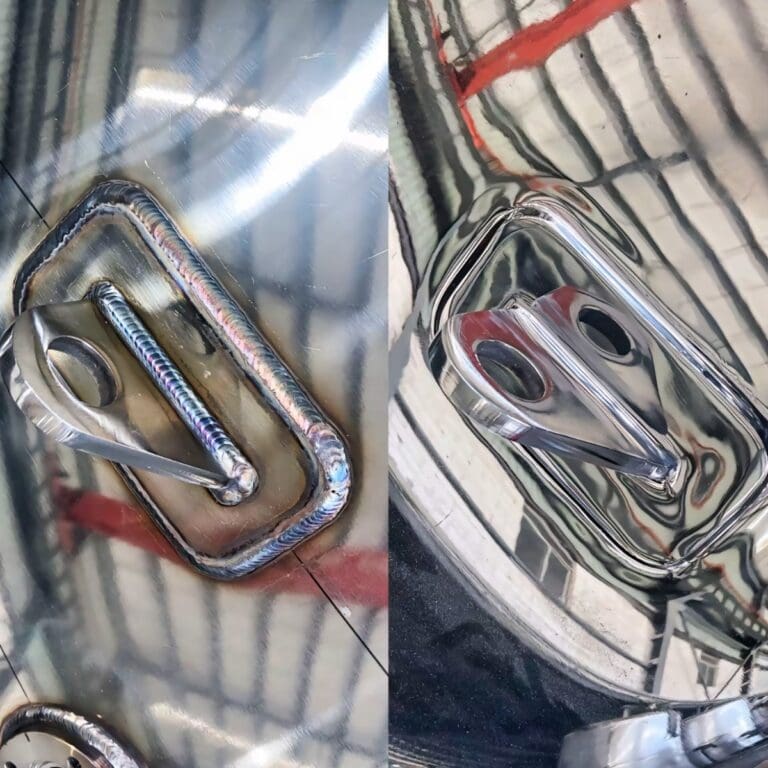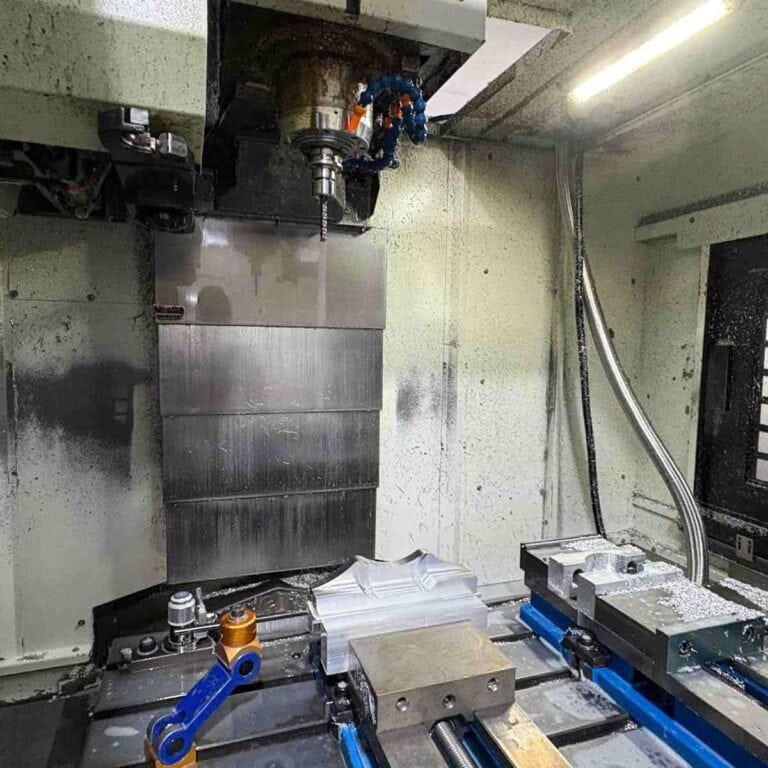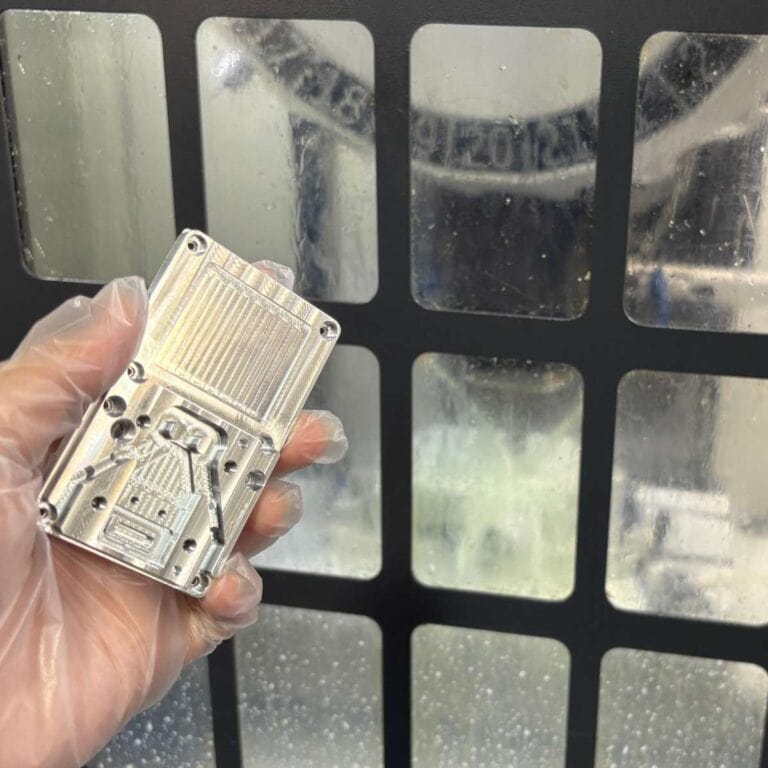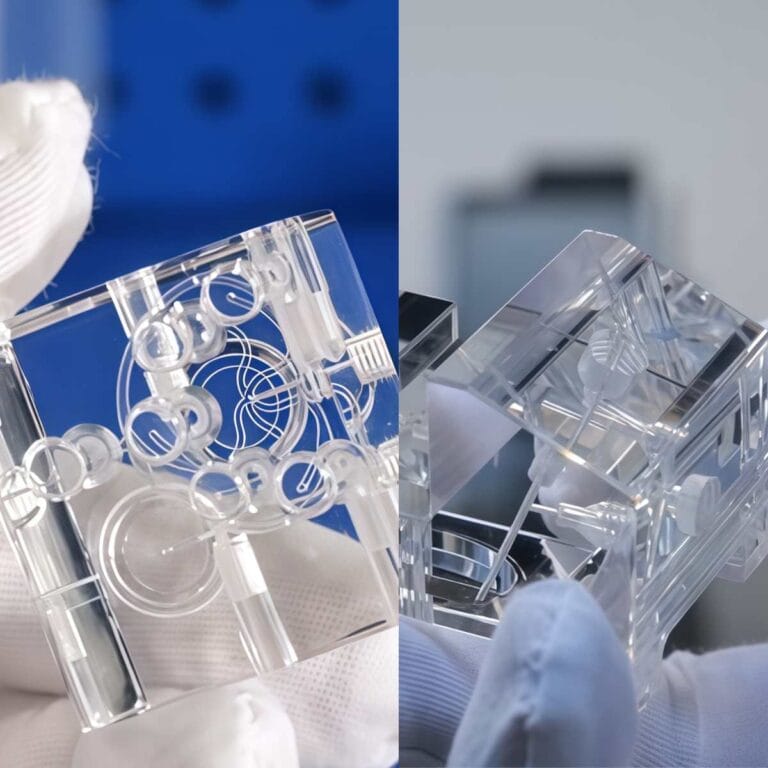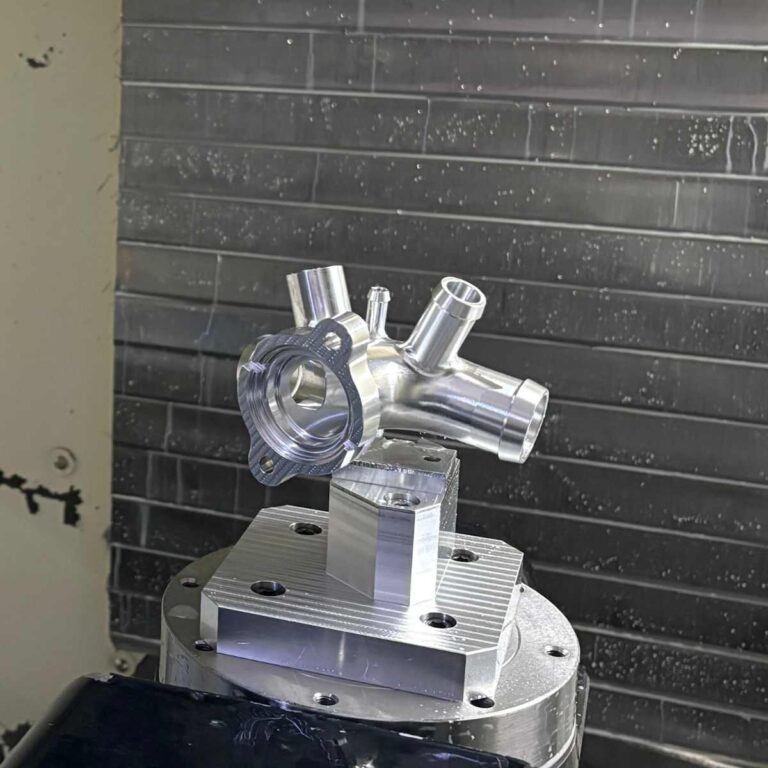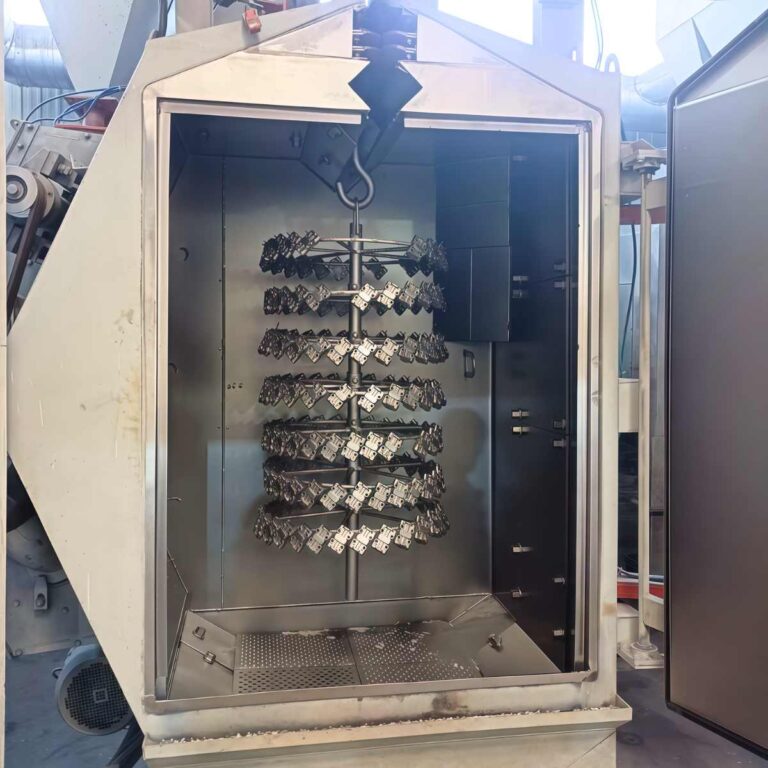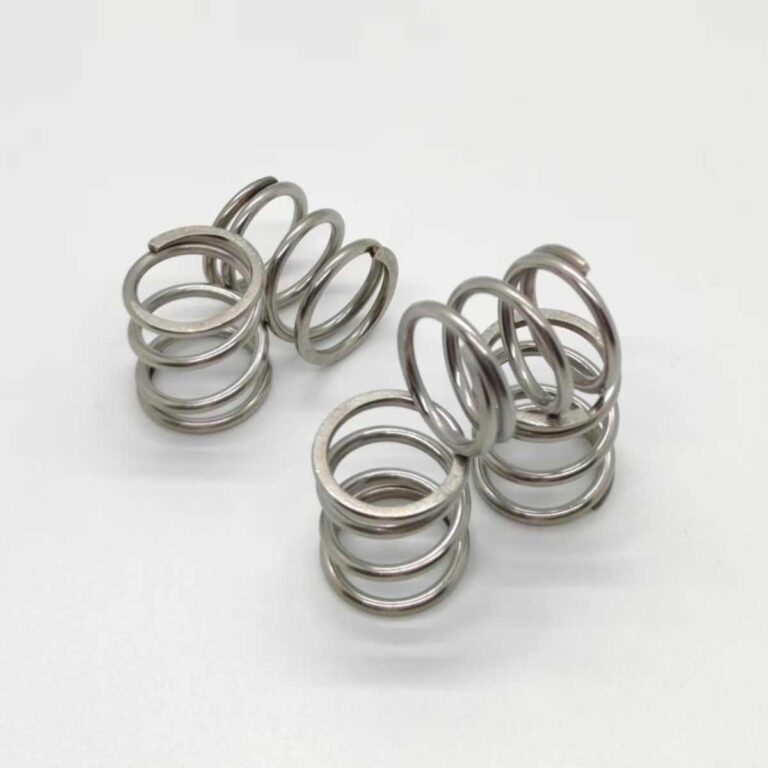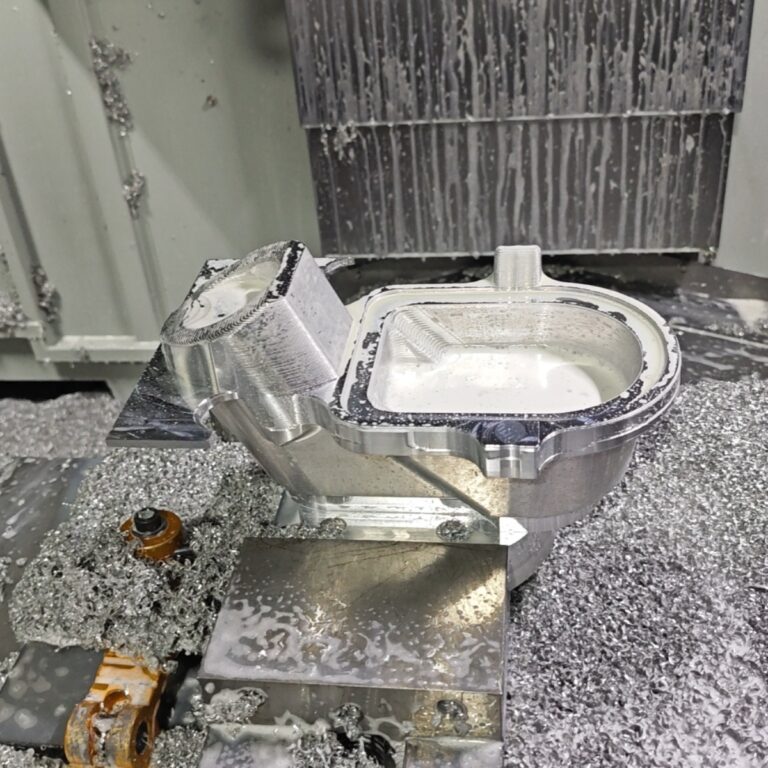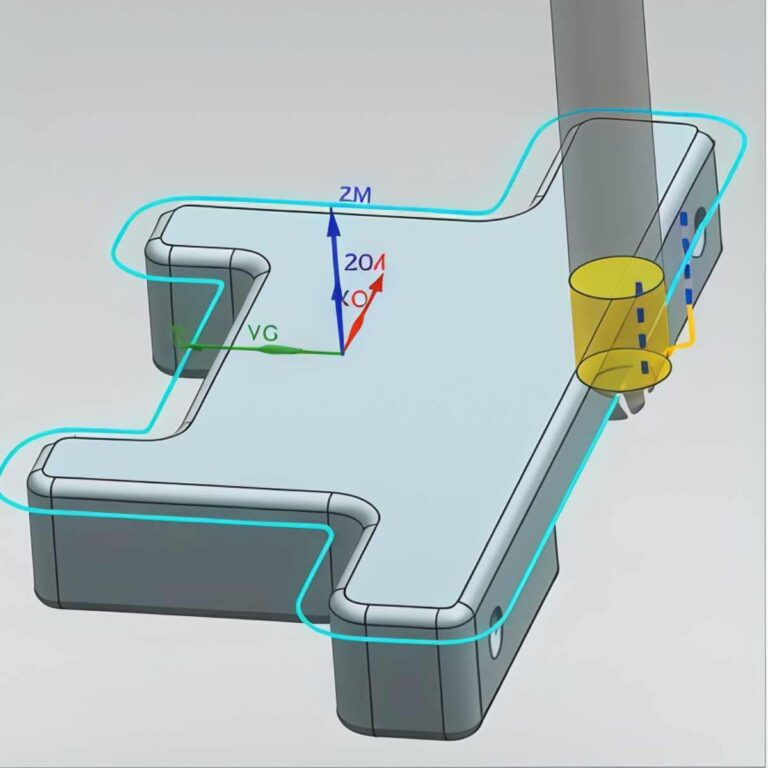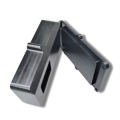Titanium Anodizing Explained: Types, Process, And Industrial Applications
Titanium anodizing is an electrochemical process that modifies the oxide layer on titanium surfaces to enhance corrosion resistance, wear protection, and aesthetic or functional coloration. It’s widely used in medical, aerospace, and industrial sectors due to its excellent biocompatibility and the ability to create vivid, dye-free colors. In this article, I’ll walk you through the entire titanium anodizing landscape—from basic principles and anodizing types to industrial applications, cost, and performance.
What Is Titanium
Titanium is a lightweight, high-strength metal with exceptional corrosion resistance, biocompatibility, and thermal stability, making it ideal for aerospace, medical, and high-performance industrial uses. Its strength-to-weight ratio rivals steel while being 45% lighter, and it withstands harsh environments including seawater and human tissue. Titanium’s non-magnetic nature and ability to display vivid colors through anodizing further expand its functional and aesthetic value across industries.
Basic Properties Of Titanium
| Property | Description | Typical Value | Applications |
| Strength-to-weight ratio | High strength with low density | Density: 4.51 g/cm³Tensile: 350–1000 MPa | Aerospace frames, implants |
| Corrosion resistance | Forms stable TiO₂ oxide layer, resists acids and saltwater | Excellent in harsh environments | Marine, chemical industry, surgical tools |
| Biocompatibility | Non-toxic, integrates with tissue (osseointegration) | Fully biocompatible | Bone screws, dental implants, pacemakers |
| Melting point & thermal stability | Maintains strength at high temps | Melting point: ~1668°CUsable: up to 600°C | Jet engines, heat exchangers |
| Magnetism & conductivity | Non-magnetic, low thermal & electrical conductivity | Non-magneticLow conductivity | MRI devices, insulating structures |
| Anodizing color potential | Can generate vibrant colors via oxide thickness (no dyes required) | Optical interference phenomenon | Jewelry, consumer products, color-coded implants |
What Is Anodizing Of Titanium
Titanium anodizing is a fascinating process that uses electricity to grow a colorful, protective oxide layer on the metal’s surface. Unlike passivation, which just cleans and boosts natural protection, anodizing lets us control the thickness of that oxide layer with voltage—no paint or pigments involved! Titanium is perfect for this because it’s stable, conductive, and naturally forms a strong oxide layer. Brilliant, durable colors created by the way light bounces through the coating.
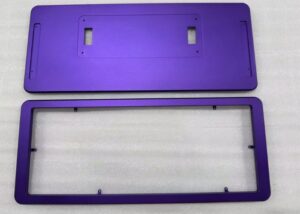
Why titanium Is Suitable For Anodizing
In my experience working with surface treatments, titanium stands out as one of the best candidates for anodizing — and not just because of its aesthetic color potential. Its fundamental physical and chemical properties make it exceptionally compatible with the anodizing process.
Stable Native Oxide Layer Formation
Titanium forms a natural oxide film (TiO₂) almost immediately upon exposure to air. This oxide is extremely stable and tightly bonded to the base metal, making it an ideal foundation for thickening through anodizing. Even without any treatment, this layer can be 1.5–10 nm thick. With anodizing, I can grow it up to 180 nm to produce specific colors and improve corrosion resistance.
Excellent Electrical Conductivity (for a Reactive Metal)
Unlike many other corrosion-resistant metals, titanium maintains sufficient electrical conductivity (approx. 2.38 × 10⁶ S/m) to support controlled electrochemical reactions. This allows me to regulate the oxide growth with precision just by adjusting voltage.
High Chemical Inertness
Titanium’s resistance to aggressive chemicals such as nitric acid, hydrochloric acid, and even seawater ensures that the anodizing electrolyte only reacts at the surface level. This stability prevents unwanted side reactions during processing and preserves dimensional accuracy.
Color Potential Through Interference
The transparent TiO₂ layer formed during anodizing acts as an optical interference film. Based on the thickness (controlled by voltage input), I can achieve a full spectrum of colors — blue at ~25V, gold at ~60V, purple near ~80V, and green beyond 100V. No dyes are involved. It’s pure physics: light waves reflecting from the surface and the oxide interface create vibrant hues.
No Hydrogen Embrittlement
Unlike some plating processes, anodizing titanium does not introduce hydrogen into the material, thus avoiding the risk of hydrogen embrittlement — a major concern for aerospace and medical applications.
Biocompatibility Maintained
Even after anodizing, titanium retains its outstanding biocompatibility. In fact, many of the medical implants I’ve worked on require color-coded anodizing for identification without compromising safety, in compliance with standards like ISO 10993.
Color Formation Principle In Anodized Titanium
One of the most fascinating aspects of titanium anodizing is its ability to generate a wide spectrum of vibrant colors—without the use of dyes or pigments. This phenomenon is purely optical, rooted in the principles of thin-film interference.
Oxide Layer Thickness Determines Color
During anodizing, a thin, transparent oxide layer (primarily titanium dioxide, TiO₂) forms on the surface. This layer alters the way light interacts with the metal.
| Oxide Thickness (nm) | Voltage (V) | Resulting Color |
| 15–25 | ~20 | Light straw / Gold / Bronze |
| 40–60 | ~30 | Blue |
| 50–60 | ~50–60 | Purple |
| 70–100 | ~80+ | Green / Teal / Deep Violet |
Mechanism: Thin-Film Interference
When light strikes the anodized surface, some light reflects off the outer oxide layer, while some passes through and reflects off the underlying metal. These two reflections interfere with each other—either constructively or destructively—depending on the oxide layer’s thickness and the wavelength of light. This results in the perceived color. The same principle can be observed in soap bubbles or oil films.
Voltage–Thickness Relationship
The oxide thickness is directly related to the anodizing voltage:
Oxide Thickness (nm)≈1.6×Voltage (V)\text{Oxide Thickness (nm)} \approx 1.6 \times \text{Voltage (V)}
Although the exact coefficient can vary based on electrolyte composition and temperature, this serves as a general guideline in industrial applications.
Color Limitations
Certain hues—particularly bright reds—are challenging to achieve due to limitations in oxide stability at higher voltages. Additionally, surface finish (e.g., polished vs. matte) significantly affects the final appearance, impacting brightness, sharpness, and color uniformity.
In summary, titanium anodizing enables color formation through precise control of oxide layer thickness, leveraging optical interference rather than pigmentation. This makes it ideal for both functional identification and aesthetic enhancement in aerospace, medical, and consumer applications.
Types Of Titanium Anodizing & Industry Standards
Titanium anodizing includes basic oxide layers, wear-resistant gray coatings (Type 2 per AMS 2488), and voltage-controlled color anodizing (Type 3). Type 2 is regulated for aerospace and medical use, while color anodizing lacks standardization, impacting consistency. Each type suits different functional and aesthetic needs.
Basic Anodic Layer
The basic anodic layer refers to the naturally occurring oxide film that forms on titanium when exposed to air, typically 1.5–5 nm thick and composed mainly of titanium dioxide (TiO₂). While it offers minimal corrosion resistance, it lacks mechanical strength, wear resistance, and aesthetic function. This passive layer is commonly found on untreated titanium components and serves only as basic protection.
Gray Wear-Resistant Coating (Type 2)
Type 2 titanium anodizing produces a colorless, gray oxide coating with enhanced hardness and lubricity. Coating thickness ranges from 50 to 200 nm, making it ideal for aerospace and medical applications, particularly orthopedic implants. Key benefits include:
Excellent anti-galling performance
No risk of hydrogen embrittlement
Fatigue strength improved by up to 20%
Lubricious surface for moving or contacting parts
Dimensionally stable — does not affect tight tolerances
Type 2 coatings comply with AMS 2488, the aerospace-grade specification, ensuring consistent performance in high-demand environments.
Color Anodizing (Voltage-Controlled)
Color anodizing (commonly known as Type 3) utilizes controlled voltages to grow oxide films of specific thicknesses (15–100+ nm), creating visible colors through light interference—no dyes or pigments are used. Typical voltage-to-color mapping:
~16V: Gold/Bronze
~75V: Blue
~100V+: Green, Violet
Commonly used in medical devices, jewelry, aerospace markings, and aesthetic designs. Advantages:
Durable, dye-free coloration
Maintains part dimensions
Combines function with visual differentiation
However, the lack of universal standards causes color variation across batches, depending on voltage precision, electrolyte composition, and surface finish.
Industry Standards (ASTM, ISO, etc.)
Titanium anodizing processes are guided by well-established global standards, ensuring reliability in technical and regulatory contexts. Key standards include:
AMS 2488 : Specification for gray Type 2 coatings in aerospace
ASTM F86 : Preparation and cleaning of titanium surfaces for medical implants
ISO 7583 : Testing methods for oxide coating thickness and resistivity
ISO 10271 : Evaluation of corrosion behavior in simulated biological environments
These standards support consistent coating integrity, corrosion resistance, and safety in critical applications.
Detailed Process Of Titanium Anodizing
Titanium anodizing demands precise surface prep and voltage control. It uses alkaline cleaning, TSP electrolyte, and voltage to grow oxide layers. Color depends on voltage, current and time affect thickness. Post-rinse and sealing improve stability. Proper setup ensures consistent, high-quality finishes.
Surface Cleaning And Preparation
In titanium anodizing, surface preparation is critical—it directly impacts oxide uniformity, adhesion strength, and final color consistency. The process typically starts with an alkaline cleaning bath (often sodium hydroxide-based) heated to 50–60°C for 10–15 minutes to remove machining oils, grease, and organic contaminants.
This is followed by a deionized water rinse to eliminate chemical residues. Next comes acid etching, commonly using a mixture of 20–40% nitric acid (HNO₃) and 1–5% hydrofluoric acid (HF). The etching step, usually 30–60 seconds, removes the native oxide layer and activates the titanium surface by introducing microscale roughness.
A final rinse with ultra-pure deionized water (≥17 MΩ·cm) ensures no ion contamination before anodizing. Drying is performed using filtered air or an oven at below 60°C to avoid pre-oxidation.
Timing is key: delays exceeding 2 hours between etching and anodizing can lead to spontaneous oxide regrowth, resulting in uneven coloration or poor adhesion. Well-prepared surfaces consistently yield superior and stable anodized layers, especially in high-spec applications like aerospace, medical implants, or decorative finishes.
Electrolyte Selection And Equipment Setup
Electrolyte choice and equipment configuration are critical for consistent and high-quality titanium anodizing results. Trisodium Phosphate (TSP) is commonly used, with a concentration of 3–10 wt%, offering good conductivity while minimizing surface aggressiveness.
A DC rectifier with ±0.1 V accuracy ensures precise voltage control, which is essential because oxide thickness—responsible for color—grows at approximately 1.6 nm per volt. Even slight voltage shifts can result in significant color variation.
The electrolyte bath is typically maintained at 20–25°C to prevent rapid, uneven oxidation. Agitation systems such as magnetic stirrers or air bubbling promote uniform ion distribution and temperature stability across the tank.
Fixtures made from titanium or inert materials are used to ensure even current flow and avoid contamination. Poor fixturing can cause hot spots, shadowing, or inconsistent coloring.
Together, proper electrolyte formulation, voltage control, thermal management, and fixturing create a stable anodizing environment—especially important for aerospace, medical, and decorative applications where color precision and surface quality are critical.
Voltage, Current, And Temperature Control
Voltage Determines Oxide Thickness and Color
Oxide thickness ≈ 1.6 × Voltage (V)
At 20V, the oxide layer is ~32 nm, producing a gold hue.
At 50V, the layer reaches ~80 nm, creating blue-purple tones.
At 100V, it exceeds 160 nm, showing green or teal shades.
Each color corresponds to a narrow voltage range—small deviations can result in inconsistent hues.
Current (Amperage) Controls Growth Rate
Recommended current density: 0.01–0.05 A/in²
Low current: slower oxide formation, High current: overheating and color drift
Stable current helps maintain uniform film thickness and color consistency.
Temperature Affects Process Stability
Ideal electrolyte temperature: 20–25 °C (68–77 °F)
Temperatures above 30 °C can cause dull colors and rougher surfaces
Active cooling and precise control (±1 °C) are essential to ensure repeatable results.
Main Anodizing Steps
Degreasing and Cleaning
All parts must be thoroughly degreased using an alkaline cleaning solution (e.g., sodium hydroxide-based cleaners at ~60°C for 5–10 minutes). This step removes oils, machining residues, and surface contaminants that could disrupt oxide formation. Rinse immediately with deionized water to avoid residue buildup.
Acid Etching
The cleaned parts are immersed in a dilute acid solution (commonly hydrofluoric or nitric acid mixtures at 2–5% concentration) for 30–60 seconds. This micro-etches the titanium surface, increases reactivity, and ensures the oxide layer grows uniformly. Surface roughness may increase slightly (Ra +0.2–0.5 µm), which enhances adhesion in functional coatings.
Rinsing
Multiple deionized water rinses are essential after acid etching to neutralize acidity and prevent electrolyte contamination. Each rinse should last at least 1–2 minutes with agitation, followed by a quick visual inspection for residue or water sheeting irregularities.
Anodizing in Electrolyte Bath
The prepared part is submerged in an electrolyte solution—commonly Trisodium Phosphate (TSP) or ammonium sulfate. Anodizing voltage is applied using a DC power supply (range: 15–110 V depending on desired color). Typical duration: 30–90 seconds. The oxide layer grows via controlled oxidation, with thickness correlated to voltage (e.g., 50 V ≈ 80 nm).
Final Rinse and Drying
After anodizing, parts are rinsed in DI water to remove residual electrolytes. Optional air or oven drying follows (at ~60–80°C for 10–15 minutes). If required, post-anodizing sealing (e.g., boiling water or steam treatment) can enhance corrosion resistance, especially for Type 2 anodizing.
Post-Treatment: Rinsing, Drying, Sealing
Final Rinsing
Immediately after anodizing, parts must be thoroughly rinsed using high-purity deionized (DI) water to remove residual electrolytes and prevent surface contamination. Rinsing is typically done in two or more stages, each lasting 1–2 minutes, with agitation to ensure full coverage. Conductivity of the rinse water should be kept below 5 µS/cm to avoid ion deposits that could affect surface color uniformity or biocompatibility in medical applications.
Controlled Drying
Drying is performed either with warm filtered air or in a convection oven set to 60–80 °C. Duration depends on part geometry and water retention but usually ranges from 10–20 minutes. Improper or rushed drying can lead to water spots, discoloration, or streaking, especially on color-anodized surfaces. In cleanroom environments, nitrogen blow-drying is sometimes used for high-spec components like implants or optical parts.
Optional Sealing Process
Sealing is not mandatory for all titanium anodizing types, but when applied, it enhances corrosion resistance and oxide stability. For gray wear-resistant coatings (Type 2), sealing can be performed via:
Boiling deionized water immersion (100 °C for 20–30 minutes)
Steam sealing at elevated pressure (120–130 °C)
Hydrothermal sealing with additives like nickel acetate or silicates
Sealing reduces surface porosity and improves the dielectric and barrier properties of the oxide layer, especially for aerospace and marine applications. However, for color-anodized titanium (Type 3), sealing is typically avoided since it can shift or dull the optical interference colors.
Troubleshooting And Mistake Recovery
Splotchy or Inconsistent Coloration
Uneven or patchy colors are often caused by insufficient or inconsistent surface preparation. For example, if degreasing is incomplete or acid etching is not uniform, localized variations in oxide growth will occur. This results in inconsistent light interference, creating blotchy appearances.
Solution: Repeat the cleaning process using an alkaline cleaner (e.g., NaOH-based solution at 2–5% concentration, 50–60 °C for 5–10 minutes), followed by uniform acid etching using a 10–20% nitric or hydrofluoric acid mixture (applied with caution under controlled conditions).
Incorrect Final Color (Over/Undershoot Target Voltage)
Color mismatch often results from applying the wrong voltage or incorrect dwell time. For instance, targeting blue (~30V) but ending with purple (~60V) indicates overshooting the desired oxide thickness.
Solution: Strip the oxide layer using an alkaline solution such as sodium hydroxide (10% concentration, immersion time ~3–5 minutes depending on coating thickness), rinse thoroughly, and restart the anodizing cycle with calibrated voltage and amperage controls.
Surface Contamination or Fingerprints
Fingerprints or residue from handling before anodizing can cause “ghosting” effects on the final finish due to local resistance variations.
Solution: Ensure all parts are handled with nitrile gloves post-cleaning, and conduct a final ultrasonic DI water rinse (5–10 minutes) before anodizing to remove micro-contaminants.
Part Geometry-Related Issues
Sharp corners, recessed holes, or blind features can experience color fade or non-uniform growth due to localized current distribution or inadequate agitation.
Solution: Use optimized racking methods, ensure proper electrolyte agitation (flow rate >1 L/min), and consider multi-pass anodizing for complex geometries.
Color Control And Performance Optimization
Titanium anodizing colors depend on voltage and surface finish. Maintaining consistent timing and voltage ensures better results. Red hues remain unattainable, and finish inconsistencies cause batch variations. Re-anodizing is possible by stripping and restarting, making it suitable for prototyping.
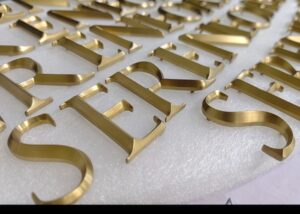
Key Methods For Reducing Color Inconsistency
Minimize Time Between Etching and Anodizing
To achieve consistent color output, the time between acid etching and the anodizing process should be kept under 6 hours, preferably within 2 hours for critical parts. Prolonged exposure to air can lead to uncontrolled oxide regrowth or contamination, which negatively impacts the uniformity of the final color layer.
Maintain Stable Voltage Throughout the Process
Titanium color is voltage-dependent, following the equation:
Oxide thickness (nm) ≈ 1.6 × Voltage (V).
Even small voltage fluctuations (±1–2V) can result in noticeably different hues. For example, blue appears around 75V, while green requires >100V. Avoid adjusting voltage mid-process to prevent layer thickness variation and color banding.
Control Surface Finish Consistency
The visual effect of anodized colors is significantly influenced by the surface roughness:
Polished surfaces:
Polished surfaces reflect more light, yielding brighter and more vivid colors.
Matte or bead-blasted surfaces:
Matte or bead-blasted surfaces scatter light, resulting in duller, muted hues.
Measured in Ra (roughness average), surfaces with Ra < 0.2 µm produce clearer colors, while those > 1.0 µm show more variation. Consistent pre-treatment and finish selection are essential for color predictability.
Can Anodizing Be Removed Or Re-colored
Removal Process
Method: Alkaline stripping is the standard method, typically using a solution of sodium hydroxide (NaOH) at 10–15% concentration.
Time: Immersion for 1–5 minutes is usually sufficient, depending on oxide thickness.
Effectiveness: Removes oxide layers up to 100 nm uniformly without damaging the titanium substrate.
Precaution: Overexposure or excessive concentration can roughen the titanium surface, especially on polished parts.
Re-etching and Surface Reconditioning
Post-stripping, the part should be re-etched using nitric-hydrofluoric acid blends or citric acid alternatives to restore surface activity.
Cleaning: Ultrasonic or acid rinse is recommended to eliminate any residual contaminants before re-anodizing.
Re-anodizing
Voltage Control: Same voltage-to-color correlation applies (e.g., 30V = blue, 50V = purple).
Consistency: Surface finish must be re-standardized (e.g., polished vs. matte), as glossiness and microtexture significantly impact final color reflection.
Cycle Repeatability: Titanium can typically undergo 3–5 stripping/anodizing cycles without measurable loss of mechanical integrity or corrosion resistance.
Applications
Design iteration: Ideal for rapid design changes in medical, aerospace, and jewelry industries.
Quality recovery: Enables correction of discoloration, uneven oxide layers, or surface defects caused during initial processing.
Limitations And Challenges Of Color Anodizing
Titanium anodizing cannot produce red due to oxide limits (~120 nm). Color shifts result from ±1V voltage, geometry, and surface finish. Even ±2°C affects hue. Strict handling and control are needed to maintain consistency and avoid contamination.
Inability to Produce Red Tones
Due to the nature of thin-film interference and the refractive properties of titanium dioxide (TiO₂), true red hues cannot be achieved through anodizing. The oxide layer thickness required to generate red wavelengths (~620–750 nm) exceeds the stable growth limit of the oxide layer (~120 nm), beyond which the film becomes unstable or begins to crack. This restricts the color range to metallics, gold, blues, greens, and purples—but excludes reds and deep oranges.
Batch-to-Batch Color Variation
Even under controlled conditions, color consistency remains a challenge across batches. Variations may arise from:
Voltage deviation: A ±1V fluctuation can shift the perceived color dramatically (e.g., from light blue to violet).
Part geometry: Complex shapes or varying surface areas lead to non-uniform current distribution, causing uneven oxide growth.
Surface finish: A change from polished (Ra < 0.2 µm) to matte (Ra > 1.0 µm) surfaces alters the color tone and saturation significantly.
Electrolyte temperature: A temperature variation of just ±2°C during anodizing can affect oxide growth rate and final hue.
Environmental and Handling Sensitivity
Post-anodizing color stability can be affected by fingerprints, surface oils, and UV exposure. Unlike dyed aluminum anodizing, titanium oxide layers are thin and transparent, making surface preparation and cleanroom-like handling critical to preserve appearance.
These limitations require tight process control, consistent material pre-treatment, and, where necessary, rework protocols such as alkaline stripping and re-anodizing, especially in precision industries like aerospace and medical devices.
Advantages And Disadvantages Of Titanium Anodizing
| Advantages | Disadvantages |
| Excellent corrosion resistance | Color inconsistency due to process sensitivity |
| No pigment or toxicity, suitable for medical implants | Requires high-voltage control systems |
| Coloration without altering dimensions | Limited color spectrum (red not achievable) |
| Improved lubricity (especially with Type 2 anodizing) | – Technically demanding surface preparation process |
Required Equipment And Materials
Titanium anodizing requires precise equipment: a stable DC power supply (up to 110V), non-reactive tanks (PP or PVC), and titanium fixtures to ensure uniform conductivity. Electrolytes like TSP need cooling for high-energy setups. Optical thickness readers and digital voltmeters enable process control. Small-scale DIY kits with benchtop tanks serve artists or labs effectively.
Power Supply And Rectifier
A stable DC power supply is essential for consistent anodizing results. The voltage range should reach up to 110V to achieve the full color spectrum on titanium—bronze tones appear around 16V, while voltages above 100V are required for green and teal hues. Voltage fluctuations greater than ±0.5V can lead to significant color inconsistency.
Anodizing Tank And Fixturing Tools
Non-reactive anodizing tanks made from polypropylene (PP) or polyvinyl chloride (PVC) are recommended due to their chemical resistance. Titanium racks and clamps ensure even electrical contact and stable conductivity throughout the anodizing process. Uneven contact may result in spotty oxide layers and non-uniform colors.
Electrolyte Formulations And Cooling Systems
Commonly used electrolytes include Trisodium Phosphate (TSP) and borate-based solutions, both offering high conductivity and process stability. In large-scale applications, cooling coils or external temperature control systems are necessary to maintain bath temperatures between 20–25°C. Temperatures exceeding 30°C can accelerate oxide formation unpredictably, affecting color uniformity.
Instrumentation: Voltage Meters, Testers, and Cleaning Tools
Precision instrumentation is critical. Digital voltmeters with at least ±0.1V accuracy are used to monitor process voltage. Oxide thickness is measured using optical interferometers or film-thickness testers to ensure target ranges between 15–100 nm. Additional equipment includes ultrasonic cleaners and acid-resistant brushes for pre-treatment, ensuring contaminant-free surfaces prior to anodizing.
Industrial Applications Of Titanium Anodizing
Titanium anodizing is widely applied across aerospace, medical, jewelry, and defense industries. It offers color coding, corrosion resistance, biocompatibility, and aesthetic finishes without adding weight or toxic pigments.
| Industry | Applications | Key Benefits of Anodizing |
| Aerospace | Brackets, fasteners, structural parts, engine housings | Corrosion resistance, lightweight, color-coded assembly |
| Medical Devices | Bone screws, orthopedic implants, surgical instruments | Biocompatibility, non-toxic color ID, surface passivation |
| Jewelry & Art | Rings, pendants, decorative sculptures | Aesthetic color finish, optical depth, non-fading hues |
| Consumer Electronics | Casings, bezels, connectors | Scratch resistance, heat dissipation, stylish finish |
| Automotive | Exhaust tips, badges, suspension components | Thermal stability, corrosion protection, visual appeal |
| Defense & Military | Drone frames, enclosures, tactical gear | Lightweight strength, non-reflective coating, durability |
| Sporting Goods | Bicycle frames, scuba gear, trekking equipment | Abrasion resistance, weight savings, anti-corrosion surface |
| Marine Equipment | Fasteners, underwater camera housings, diving tools | Saltwater resistance, long-term durability |
| Electronics & Optics | Heat sinks, sensor housings, optical mounts | Electrical insulation, enhanced infrared or UV performance |
| Research & Prototyping | Lab tools, precision instruments, color-coded components | Easy re-coloring, rapid visual identification, non-magnetic |
Cost And Sustainability Considerations
Titanium anodizing costs more due to specialized equipment, skilled labor, and strict color control. It uses higher voltage than aluminum. Environmentally, waste must be neutralized and water recycled. The durable oxide layer offers long-term savings with minimal maintenance.
Cost Drivers
Titanium anodizing involves higher upfront investment compared to aluminum. The initial setup cost includes acid- and alkali-resistant tanks (typically polypropylene or PVC), rectifiers capable of delivering stable DC power up to 110V, and temperature control systems. Skilled technicians are essential due to the process’s sensitivity—small voltage or surface prep errors can significantly affect the outcome. Achieving consistent color, especially in batch production, often requires precise voltage control (±1V tolerance), which increases quality inspection time and overall QA costs.
Comparison with Aluminum Anodizing
Unlike aluminum, titanium requires significantly higher voltages (up to 110V) for anodizing to achieve interference-based colors. Aluminum anodizing typically operates in the 15–25V range and relies on dyes for color, whereas titanium’s optical colors emerge from controlled oxide thickness (e.g., ~1.6 nm/V). While titanium offers superior color vibrancy and biocompatibility, it also demands stricter control of current density, temperature, and surface conditions, increasing both complexity and operational cost.
Environmental Impact and Waste Disposal
Titanium anodizing generates both alkaline (e.g., TSP-based) and acidic effluents during surface prep and stripping. These must be neutralized to pH 6–9 before discharge to meet environmental regulations. Implementing closed-loop water treatment systems can reduce water consumption by up to 90%, making large-scale anodizing more sustainable. Additionally, titanium anodizing avoids the use of dyes and heavy metals, reducing the ecological footprint compared to traditional pigment-based methods.
Coating Longevity and Maintenance
Once anodized, titanium forms a stable TiO₂ layer that is chemically inert, corrosion-resistant, and physically robust. The coating does not degrade under UV or atmospheric exposure, and no reapplication is necessary unless aesthetic color shifts occur due to wear or surface abrasion. In most industrial applications, including medical and aerospace, the anodized layer lasts the full service life of the component—often 10+ years with minimal maintenance.
FAQs
How Long Does Titanium Anodization Last?
In my experience, anodized titanium can maintain its color and corrosion resistance for over 10–20 years under normal conditions. The oxide layer is around 20–100 nm thick, chemically stable, and doesn’t flake or peel. However, UV exposure and abrasion may gradually dull the color on high-touch surfaces.
Does Anodized Titanium Scratch Easily?
Although titanium is strong, its anodized oxide layer is very thin—usually less than 100 nm. I’ve noticed that sharp objects or rough contact can scratch the surface, especially polished finishes. It resists corrosion well, but mechanical wear can expose the base metal and alter the appearance.
Do You Need To Etch Titanium Before Anodizing?
Yes, I always etch titanium before anodizing. Acid etching removes surface oxides and contaminants, improving adhesion and uniform oxide formation. Without proper etching, the anodized layer may appear patchy or splotchy. I typically use a hydrofluoric–nitric acid mix for 30–60 seconds.
What Are The Precautions For Using Titanium Anode?
When using titanium as an anode, I monitor temperature, current density, and avoid over-voltage. Excess current (>10 A/dm²) can damage the oxide layer or cause arcing. Titanium must also be properly cleaned, as oils or oxides reduce conductivity and lead to uneven anodizing results.
If Titanium Is A Strong Metal, Why Does It Scratch Easily?
Titanium’s strength refers to its high tensile strength (~900 MPa), not surface hardness. I’ve observed that its oxide layer and base metal (around 36 HRC) are softer than coatings like DLC or ceramic. That’s why keys or sand can still leave visible scratches on titanium surfaces.
Conclusion
Titanium anodizing isn’t just about color—it’s about precision, protection, and performance. From aerospace to medical implants, this technique offers durable, non-toxic coatings with micron-level control. Achieving consistent results takes expertise in surface prep, voltage tuning, and process stability. If you’re exploring lightweight, high-performance solutions with a visual edge, titanium anodizing could be exactly what your project needs. Have a part in mind? Let’s talk possibilities.

